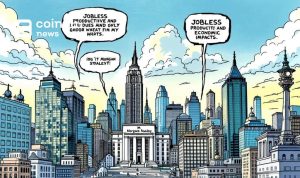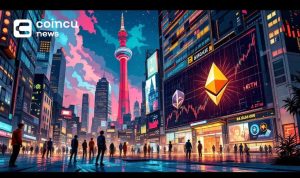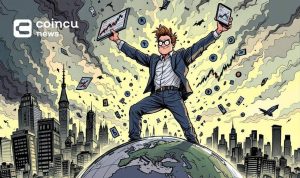The Metaverse is a highly interactive virtual 3D space that will change how humans live. Let’s see the impact of the Metaverse and NFTs on our world in this article below!
What is Metaverse?
The metaverse is a concept of an online, 3D virtual space connecting users in all aspects of their lives. It would connect multiple platforms, similar to the internet containing different websites accessible through a single browser.
The concept was developed in the science-fiction novel Snow Crash by Neal Stephenson. However, while the idea of a metaverse was once fiction, it now looks like it could be a reality in the future.
Augmented reality will power the metaverse, with each user managing a character or avatar. For example, you could hold a mixed reality conference in your virtual workplace using an Oculus VR headset, conclude work and relax in a blockchain-based game, and then manage your crypto portfolio and finances all within the metaverse.
Some characteristics of the metaverse can already be seen in existing virtual video game environments. Workplace socialization tools such as Gather or games like Second Life. The town combines several aspects of our lives into online environments. While not the metaverse, these applications are relatively close. The metaverse does not yet exist.
The metaverse will enable economies, digital identification, decentralized government, and other uses in addition to games and social media. Even today, user production and ownership of valuable items and currencies contribute to developing a unified metaverse. All of these characteristics give blockchain the ability to fuel this future technology.
NFT uses In the metaverse
Why are NFTs required to enter the metaverse?
The metaverse’s proponents foresee a virtual environment where everyone can design their avatar. With this one-of-a-kind virtual persona, one can attend athletic events and concerts, go shopping, play games, connect with others, and do other things. While everyone with internet connectivity can access the metaverse, not everything in the metaverse will be free. For example, people will almost certainly have to pay to attend a concert. Furthermore, developing the metaverse’s various aspects, such as interactive games, will be costly.
NFTs, in addition to being used for trading digital art, can theoretically be linked to anything. As a result, rather than utilizing traditional money to assign value to objects in the metaverse, NFTs will be employed. NFTs can be used to verify that someone is the lawful owner of a certain thing. Hence they serve as a foundation for attributing value to digital objects. NFTs, for example, can assist in verifying that someone owns a piece of metaverse real estate or that they have the right to attend a virtual performance. Furthermore, NFTs will be used as awards in numerous games in the metaverse.
People will utilize various cryptocurrencies to purchase these NFTs. As a result, as the metaverse takes off, it may be worthwhile for investors to invest in these cryptocurrencies now. Cryptocurrencies will function as the metaverse’s currency, with each platform having its own set of tokens. If people want to invest in Decentraland’s metaverse, for example, they may do so with MANA, Decentraland’s native token.
Investors should keep a close eye on the various metaverse developments. This allows users to decide which cryptocurrencies to acquire and how to reinvest them as NFTs.
NFT investment in metaverse
Purchase NFTs or Virtual Land in-game
Virtual real estate has emerged as a key feature among metaverse investment prospects. Popular metaverse platforms provide game-like settings where people may construct and trade assets and intuitive experiences. On metaverse platforms, people can learn how to invest in the metaverse using in-game NFTs and virtual land parcels.
First, users must create an account on the metaverse platform from which they intend to buy NFTs and virtual land. Decentraland, for example, is a great place to buy virtual land; Sandbox is great for buying or selling NFT art, and Axie Infinity is great for buying or selling NFT characters and virtual land parcels.
However, investing in the metaverse through NFTs and virtual land has serious consequences. Non-fungible tokens do not have a fixed price and may vary depending on factors such as scarcity. On the other hand, purchasing NFTs or virtual land parcels through primary and secondary NFT marketplaces offers significant advantages and disadvantages.
NFTs on key NFT marketplaces, such as the metaverse platforms, might provide assurance of better resale value. On the other hand, investors may have difficulty evaluating the true value of NFTs in the primary market. Secondary marketplaces such as OpenSea allow people to compare prices and obtain information about all NFTs on one platform.
Advanced NFT investing in the metaverse
Total spending on NFTs is expected to be higher and higher, with buyers enjoying passive yields (residual income) and maximizing the potential of their investments in a variety of ways, including:
- Yield-generating NFTs: Timing markets in Web 3 can be difficult, even for the most seasoned investor. Thus, several projects generate passive yields by providing governance tokens to holders to establish more realistic incentives and minimize the volatility of the NFT industry. Among these collections is the Genesis Cyber Kongz, which will generate 10 $BANANA tokens daily for the next ten years. SupDucks ($VOLT) and Mutant Cats ($FISH) are two more instances.
- Staking: In addition to collecting NFTs that create passive returns, investors can reap the benefits of NFTs and DeFi protocols by staking or entrusting their assets to a smart contract to get rewards. Given the rigorous rules surrounding securities, most of these awards are in the form of project-specific tokens utilized for typical features such as governance or voting rights. Stakeholders can sell tokens in the market if they are listed on decentralized exchanges such as SushiSwap or Uniswap.
- Nested NFTs: Historically, NFTs were relatively static. In most cases, what someone minted or purchased in a secondary market could not be changed. People may now layer NFTs upon other NFTs using platforms like Charged Particles, transforming one NFT into a virtual basket that can carry many ERC-based tokens. This new sort of layered NFT adds inherent value to a collectible and transforms it from a speculative investment into a yield-generating asset – with a scarce NFT tied to another scarce NFT indefinitely.
The potential of NFT and metaverse
How can the metaverse promote equitable and sustainable growth?
The Metaverse allows people to reinvent public services and infrastructure. This opens up new opportunities for providing public services such as education and healthcare, creating jobs, and developing community spaces. For example, the Seoul government intends to invest at least $32 million in a metaverse ecosystem to improve city services, planning, administration, and virtual tourism assistance. Overall, one major challenge will be ensuring that the public sector talent pool is well-equipped to design priorities for the greatest social benefit and collaborate with technology providers.
There is a lot of optimism about the metaverse as a welcoming environment for creators, producers, and consumers. People can consider access and inclusion in the metaverse economy to be something for many, not just a few. This opens up the possibility of democratizing learning, development, and education opportunities. The removal of geographical obstacles offers up new avenues of access.
The impact of the metaverse on the world and the future of technology
Millions of lives have steadily adopted an ever-increasing digital lifestyle since the internet’s beginnings. Social interactions, collaborative business, and buying, previously only available in physical settings, may now be easily carried out online. The Metaverse is a highly interactive virtual 3D space that will change how we live.
Know the concept
While there is no single technology that underpins the Metaverse, the major technologies that will propel it forward are likely to include cryptocurrencies, blockchain, virtual reality (VR), augmented reality (AR), artificial intelligence (AI), and the Internet of Things (IoT). Furthermore, there is no single definition of the Metaverse; it is more convenient to think of it as a virtual space that emulates the physics of the real world, leveraging cutting-edge AI and VR offerings to drive vivid interactive experiences among multiple digital avatars (users) and their virtual environments.
Changing the business landscape through technological advancements and breakthroughs
As envisioned by global digital pioneers such as Microsoft, Facebook, Epic Games, and Decentraland, the Metaverse aspires to provide tech users with similar yet separate capabilities that could have enormous ramifications in the commercial world. It would encourage high-touch interactions between remote users, consumers, and employees. Professionals can now hold face-to-face meetings from their current locations.
Customers may now browse locations, try out new products, and even evaluate alterations without physically traveling to a store. Furthermore, by breaking the laws of physical reality, the Metaverse has opened up a whole new universe of interesting business potential to be explored.
For example, prominent automobile manufacturers have built the ‘Auto-Motor-Verse,’ a subset of the Metaverse, to generate virtually-accessible digital 3D reproductions of their cutting-edge factories. Such virtual venues enable employees to collectively examine adjustments, revisions, and manufacturing lines during the planning stages. Similarly, automakers are offering test drives of newly unveiled concept cars and models, giving interested buyers a sneak glimpse into the vehicle’s driving experience, interiors, amenities, and HUDs.
Future of the Metaverse
As the Metaverse concept continues to include Web 3.0 technology, led by blockchain technologies such as Cryptos and NFTs, the future of the Metaverse will be very similar to the real world in many ways and may eventually replace real-world activities such as regular commutes.
Certain metaverse NFT vendors have released their own NFTs that may be used to purchase things such as footwear and clothes across numerous metaverses. Furthermore, an increasing number of NFT users notice the financial opportunities in virtual lands on games by selling and renting them at a profit. Individuals who have little interest in Metaverse but see it as a financially rewarding platform could invest in the equity of companies well-positioned in the concept. The Metaverse’s future could potentially play an important role in the exponential growth of the virtual economy, an area that is heavily reliant on virtual worlds and video games with few disruptions.
As a result, artists and users benefit greatly, which can be amplified if NFTs are integrated into in-game assets to decentralize the virtual economy. The future Metaverse is based on operating openly, without significant interruptions from corporations or communities, because creators from various geographies would be participating with an increasing number of brands looking to establish their outlets on the broader Metaverse, similar to how the internet currently operates.
Verdict
The metaverse is the digitalized world’s next frontier. It will encompass all aspects of human life and will have no bounds. The metaverse will unleash the potential of a few billion people, transforming our lives as a whole. It is the impending fusion of online and physical reality.
If you have any questions, comments, suggestions, or ideas about the project, please email ventures@coincu.com.
DISCLAIMER: The Information on this website is provided as general market commentary, and does not constitute investment advice. We encourage you to do your own research before investing.
Issac
Coincu Ventures

















